
Citizen of the Galaxy is a science fiction novel by American writer Robert A. Heinlein, originally serialized in Astounding Science Fiction and published in hardcover in 1957 as one of the Heinlein juveniles by Scribner's. The story is heavily influenced by Rudyard Kipling's Kim.
A sleeper ship is a hypothetical type of crewed spacecraft, or starship in which most or all of the crew spend the journey in some form of hibernation or suspended animation. The only known technology that allows long-term suspended animation of humans is the freezing of early-stage human embryos through embryo cryopreservation, which is behind the concept of embryo space colonization.

Starflight 2: Trade Routes of the Cloud Nebula is a 1989 science fiction video game developed by Binary Systems and published by Electronic Arts as the sequel to the successful Starflight. It features a combination of space exploration, role-playing and strategy within a futuristic setting. The player commands a spaceship capable of traveling to the game world's 150 solar systems, communicating with or attacking other spaceships, and landing on planetary surfaces which may be explored with a crewed rover for plot clues, minerals and alien lifeforms. Game mechanics and the overall look and feel closely resemble the earlier Starflight game, but many new features are introduced including an interstellar trade-based economy, new sentient alien races, and new spacecraft accessories and artifacts. The player is tasked with discovering the ultimate source of the advanced spacecraft technology and unlimited fuel supply which provide a military advantage to the Spemin, a hostile alien race threatening to annihilate or enslave humanity. A major part of the game consists of earning enough money to pay for spaceship upgrades and crew training by engaging in interstellar trade and barter with various alien cultures at their planetary trading posts.
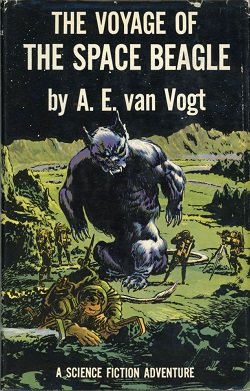
The Voyage of the Space Beagle (1950) is a science fiction novel by Canadian-American writer A. E. van Vogt. An example of space opera subgenre, the novel is a "fix-up" compilation of four previously published stories:
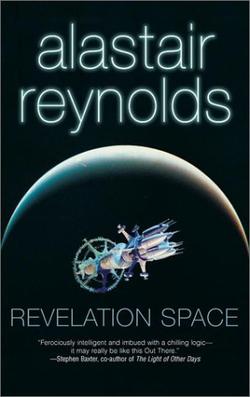
Revelation Space is a 2000 science fiction novel by Welsh author Alastair Reynolds. It was the first novel set in Reynolds's eponymous universe. The novel reflects Reynolds's professional background: he has a PhD in astronomy and worked for many years for the European Space Agency. It was short listed for the 2000 BSFA and Arthur C. Clarke Awards.

Space Angel is an animated science fiction television series produced in the United States from early 1962 through 1964. It used the same Synchro-Vox lip technique as Clutch Cargo, the first cartoon produced by the same studio, Cambria Productions. The show was created by Dick Darley, who also created the 1950–1955 live-action series Space Patrol.

Revolt on Alpha C is a juvenile science fiction novel by American writer Robert Silverberg, published by Crowell in 1955. It was Silverberg's first published book.

The Continent Makers and Other Tales of the Viagens is a 1953 collection of science fiction stories by American writer L. Sprague de Camp, the fifth book in his Viagens Interplanetarias series. It was first published in hardcover by Twayne Publishers, and in paperback by Signet Books in 1971 with a cover by illustrator Bob Pepper. An E-book edition was published by Gollancz's SF Gateway imprint on September 29, 2011 as part of a general release of de Camp's works in electronic form. It has also been translated into Portuguese, Dutch, and Italian. The pieces were originally published between 1949 and 1951 in the magazines Astounding Science-Fiction, Startling Stories, Future Combined with Science Fiction, and Thrilling Wonder Stories.

M33 in Andromeda is a collection of six science fiction stories by Canadian-American writer A. E. van Vogt, first published in April 1971.
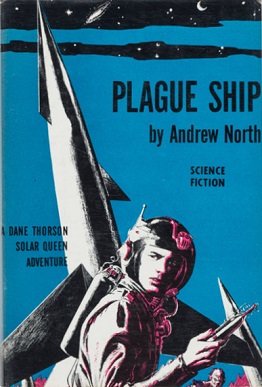
Plague Ship is a science fiction novel by Andre Norton under the pseudonym Andrew North. It was published in 1956 by Gnome Press in an edition of 5,000 copies. The book is the second volume of the author's Solar Queen series.

Triplanetary is a science fiction novel and space opera by American writer E. E. Smith. It was first serialized in the magazine Amazing Stories in 1934. After the original four novels of the Lensman series were published, Smith expanded and reworked Triplanetary into the first of two prequels for the series. The fix-up novel Triplanetary was published in book form in 1948 by Fantasy Press. The second prequel, First Lensman, was a new original novel published in 1950 by Fantasy Press.

One in Three Hundred is a science fiction novel by British writer J. T. McIntosh. It was originally published as three novellas in The Magazine of Fantasy and Science Fiction in 1953-54, and was then published by Doubleday & Company, Inc. During 1956 the novel was reissued by Ace as Ace Double D-113, in a dos-à-dos binding with Dwight V. Swain's The Transposed Man.

Galactic Derelict is a science fiction novel by American writer Andre Norton, the second in her Time Traders series. It was first published in 1959, and as of 2012, had been reprinted in eight editions. It is part of Norton's Forerunner universe.
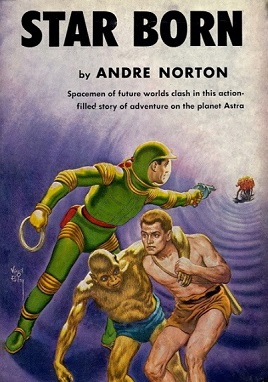
Star Born is a science fiction novel by American writer Andre Norton, first published in 1957 by World Publishing Company of Cleveland. As the sequel to The Stars Are Ours!, Star Born continues its predecessor's adventure three generations later.

Starship Through Space is a science-fiction novel written by G. Harry Stine under the pseudonym Lee Correy. It was published in 1954 by Henry Holt and Company. The book tells the story of the building of the first starship and of its flight to Alpha Centauri.
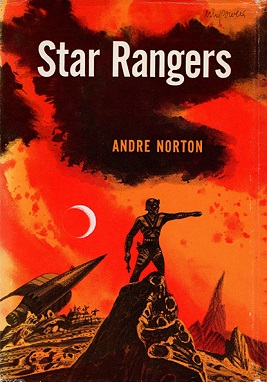
Star Rangers, also known as The Last Planet, is a science fiction novel by the American author Andre Norton. The novel was published on August 20, 1953, by Harcourt, Brace & Company. This is one of Norton's Central Control books, which lay out the history of a galactic empire through events suggested by Norton's understanding of Terran history.
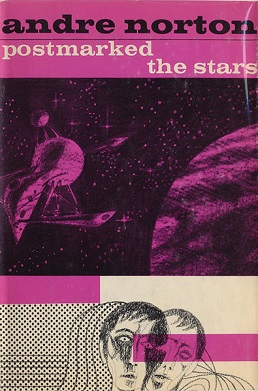
Postmarked the Stars is a science fiction novel by American writer Andre Norton, first published in the United States in 1969 by Harcourt, Brace & World. It is part of the series about the adventures of the interstellar tramp freighter Solar Queen and her crew.

Space travel, or space flight is a classic science-fiction theme that has captivated the public and is almost archetypal for science fiction. Space travel, interplanetary or interstellar, is usually performed in space ships, and spacecraft propulsion in various works ranges from the scientifically plausible to the totally fictitious.

















